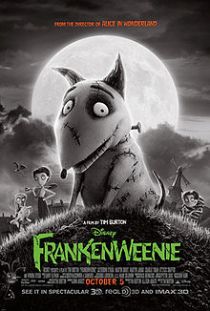Jay Gatsby, the specimen of Fitzgerald’s imagination, is a man which encompasses hope and the epitome of the American Dream. So it comes as no surprise that to watch the new Baz Luhrmann adaptation I was full of hope which slowly diminished through the course of the film. Not like the green light which incessantly made its dominance cast over the whole film.
I normally intend on rereading the book version of any adaptation before I go to watch the film and this was the first time I actually did so. (Maybe, the short novel layout helped in this aim being fulfilled.) But Fitzgerald’s most famous novel was no stranger to me and its a novel which often revives itself in my mind. So my hope for the new adaptation was strong, especially as it had to follow the footstep’s of the previous adaptation which followed the novel so closely, 1974’s version directed by Jack Clayton.
The film began with Nick Carraway in a mental institute (Or that’s what it seemed to be) that was an interesting take on the story. I suppose the last section of the book would make you believe that Nick did lose his faith in humanity. This ‘loss’ places him in the institute. A creative twist, which renewed the novel, and one I did appreciate. This twist brought to the fore the character of Nick as an author. Him with a type writer. His creative process. The embalming of Jay Gatsby made this feature of Baz Luhrmann’s adaptation stand out and animated the character of Nick more so.
For me the story of The Great Gatsby gives the reader an insight to the Jazz Era. Parties. Flappers. Smoking. Alcohol Consumption (the prohibition restriction in America made this mundane act rather scandalous.) All of which was achieved through the means of money. Whether is was NEW or OLD money. It bought many things. But for the new money it never bought acceptance which was an issue captured by Joel Edgerton’s interpretation of Tom Buchanan very well. It is this, beside the whole issue with Daisy, which further adds tension to Tom’s encounter with Gatsby.
I could easily go on and include other features of the film’s adaptation from the novel but I feel this blog has to end somewhere. That somewhere is with the appreciation of Leonardo diCaprio’s casting as Jay Gatsby. It was played perfectly by him. He brought to life the Gatsby I first encountered when I read the novel, and it was refreshing to actually be satisfied for once with the casting of a character I love. The above picture is from the very endearing scene of when Gatsby meets Daisy for the first time!
SO RIGHT:
The casting (except Myrtle, whom I had imagined a little on the chubby side, she is meant to be the opposite to Daisy. But the only opposition I saw was the blonde hair to the red.)
BUT OH SO WRONG:
The excessive effects (however that could have been effective in 3D- another call to the cinema’s may be on the agenda)
The music (this feature annoyed me a little, so many classical Jazz inspirations, so why not evoke that genius? A jazzed up version of Crazy in Love, really?) A bit of Bessie Smith- http://www.youtube.com/watch?v=GfnmpQv79no would have been appreciated.
Even with the pros and cons I will be watching this film again. Delving into the Jazz era is a true pleasure and I am thankful to Fitzgerald’s transcription of such an era!


